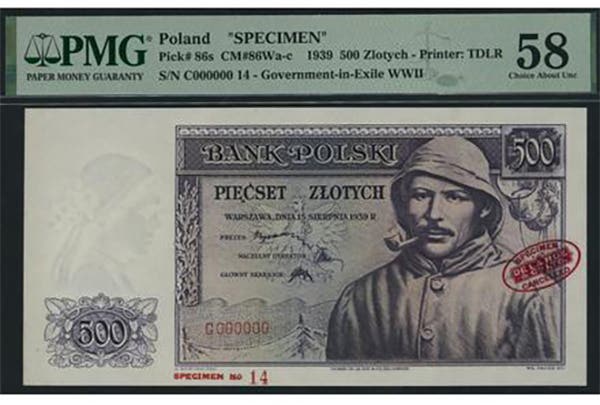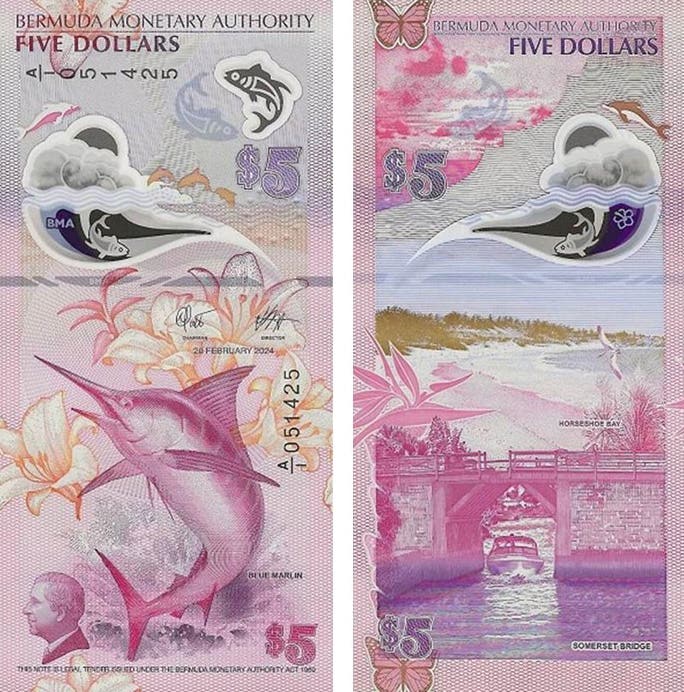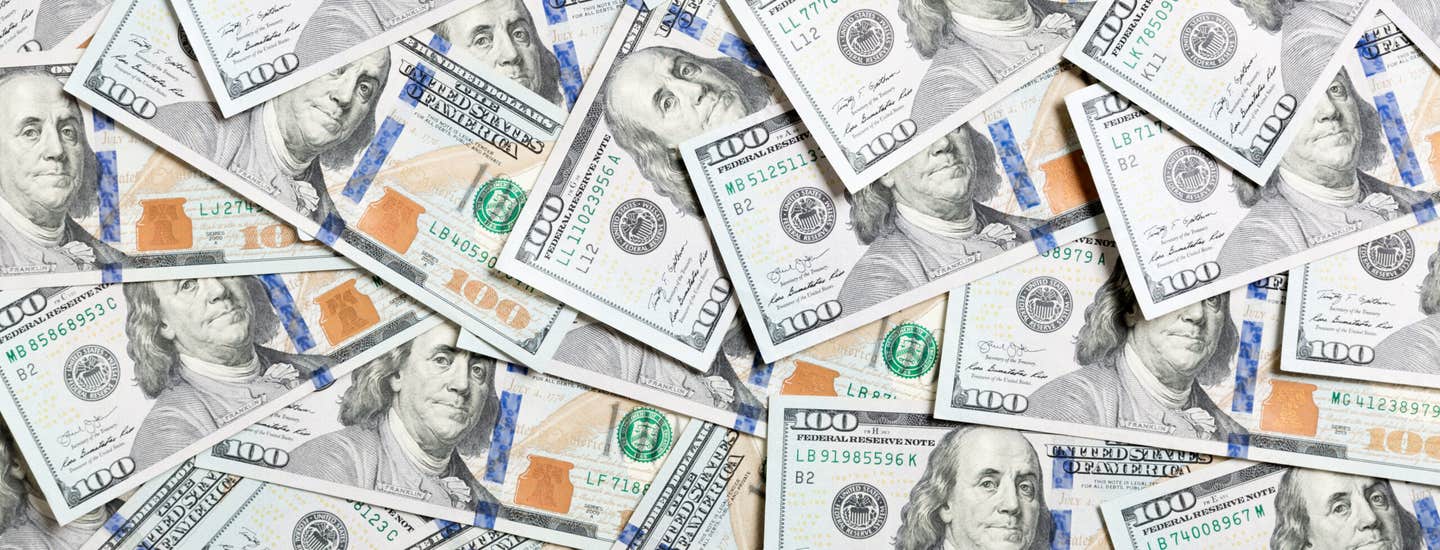Varieties Tied to the Launch of $1 1935 Silver Certificates
It is not widely known among collectors that the seals on U.S. Treasury currency were printed and the notes separated within the U.S. Treasury building under the auspices of the…
It is not widely known among collectors that the seals on U.S. Treasury currency were printed and the notes separated within the U.S. Treasury building under the auspices of the U.S. Treasurer between 1885 and 1910. All the rest of the printing operations, including serial numbering, were carried out at the Bureau of Engraving and Printing.
The printing of the $1 Series of 1935 silver certificates was a big deal for both the U.S. Treasury in general and the Bureau of Engraving and Printing in particular. The production of the notes represented an important innovation for the Bureau. They were the first small size notes with overprinted signatures of the Secretary of the Treasury and U.S. Treasurer.
For the Treasury, there was a behind-the-scenes factor of much greater consequence. President Franklin D. Roosevelt had recommended using the Great Seal of the United States on their backs so Secretary of the Treasury Henry Morgenthau relinquished his authority to sign off on the back design and instead had the Bureau submit the die proof to the President for his personal approval.
FDR, popularly called the collector-in-chief owing to his avid pursuit of philately, was not some distant figure separated from the BEP by layers of bureaucracy. Instead, FDR was right there passing along ideas for commemorative stamps, often in sketch form, and ultimately the force behind entirely new series of stamps including the popular National Parks series of 1934 and the Presidential series of 1938.
Currency was not beyond FDR’s interest. When the Bureau began to modernize the production of $1 silver certificates by overprinting the Treasury signatures, he advised Treasury that the back of those new $1s should carry images representative of the nation rather than being generic monopoly back designs inherited from the 1920s that did nothing more than specify the denomination.
The very first back and face plates to be finished were the number 2 plates of each on Aug. 9, 1935. Both were sent to press for a trial run that day, a run that lasted until Aug. 12th.
Upon completion of the trial run, the two plates were rushed over to the Superintendent of Buildings and Grounds for the Treasury Department and installed in a display case in the lobby of the Treasury Building for all to see. The centerpiece of the display was, of course, the new backs. This was an unprecedented action and we suspect that if Roosevelt didn’t have a heavy hand in the back design, the display of the plates wouldn’t have occurred.
The two plates remained on display from Aug. 12, 1935, to April 7, 1938. When the display was dismantled in 1938, the two plates—still perfectly good—were returned to the BEP and added to the active rack in the plate vault.
And this is where the story goes from beyond unprecedented to a numismatic thriller.
The Series of 1935 sliver certificates were a work in progress during the three years those plates were on ice. At the time of the trial press run in 1935, the face plates were being made without the titles of the Treasury officials under the spaces allocated for their signatures because the initial plan was to overprint those titles along with the signatures. That changed shortly after the trial.
Later, in 1937, the Secret Service requested that the size of the plate serial numbers on both the faces and backs be enlarged significantly so they still could be read on worn notes. The production of the macro plate serials began in January 1938.
The change in plate serial number size gave rise to the Series of 1935A. In addition to using larger plate serial numbers, the series date was overprinted on the Series of 1935A notes.
When the Treasury display was broken down, both Series of 1935 and 1935A notes were being printed in separate production streams within the BEP as the last of the now obsolete 1935 face plates were being used up. They had to separate the two streams because the series date was being overprinted on the 1935As whereas it was incorporate within face plates on the 1935s.
The last of the back plates with the micro plate serial numbers also continued to be used up as well, but in their case, no one was concerned about segregating the production with micro numbers from that with macro numbers. Production from both was streamed to the face plate presses without regard to the plates on those presses.
When a macro back found itself mated with a 1935 (micro) face or a micro back with a 1935A (macro) face, we had the creation of what are our popular mule varieties.
The use of back plate 2 in 1938 simply added another micro plate to the mix of other micros that were being used up. The others had plate serial numbers in the high 3-digit range, so the single-digit 2 stood out like a sore thumb when they were discovered by collectors. Unlike their single digit brethren, which appeared in the earliest serial number blocks beginning with AA, the known back plate 2 notes have been reported on Series of 1935A mules printed with 1938 vintage serial numbers from the QA, RA, SA and TA blocks. Consequently, they are true oddities that are highly collectable and very scarce.
The use of face plate 2 in 1938 was an entirely different story and conundrum for the BEP. It was one of a dozen face plates made without the titles of the Treasury officials. They were plates 1-11 and 14. It was quickly determined that engraved titles should be part of the plates instead of being overprinted. Consequently, the titles were an integral feature on the plates made thereafter, and in time, the titles also were added to plates 1, 3-11 and 14. The latter were rotated into normal service and used up.
But face plate 2, ensconced in the lobby display, was not altered to include the titles. When the display was dismantled, it was forgotten that the plate didn’t have the titles. Who would have thought of that detail?
When the plate was sent to press in 1938, it ended up on a 4-plate power press alongside three plates that had the titles so every 4th sheet from the press had the omission. The problem went unnoticed for three days inclusive of April 26-28, during which 1,464 sheets were printed from plate 2.
Those 1,464 sheets began to reach the serial numbering division where the omission was spotted. The contaminated stream of sheets produced by the press had to be purged of the defective sheets.
They were treated as misprints. However, an accurate count of the ones that were caught was not made because other misprinted sheets were mixed into the totals.
In due course, face plate 2 was canceled. Even though it was perfectly good, they didn’t bother to add titles to it, but instead got rid of the then nuisance thing!
The numismatic question is, did they catch all the defective sheets in 1938!
The story of the Series of 1935 plates without Treasury titles is not quite complete though. Shortly after the other such plates began to be completed in 1935, the Bureau ran another press run using four of them on a 4-plate power press. That run was carried out September 7-9, 1935, using plates 1, 3, 4 and 5. That press run produced 2,141 sheets on regular distinctive currency paper complete with backs with no indication that the run was experimental. Those sheets were taken up in the accounts as regular $1 silver certificates and sent for numbering.
They were recognized as being defective in the numbering division and culled as mutilated. Bureau personnel think they caught all of them.
The titles were added to plates 1, 3-11, and 14 after the September 7-9, press run. Of course, plate 2 had escaped to the Treasury lobby display by then!
Sources of Data
Bureau of Engraving and Printing, 1863-1980, Certified proofs of currency production plates: National Numismatic Collection, Museum of American History, Smithsonian Institution, Washington, DC.
Bureau of Engraving and Printing, 1913-1939, June 1, 1938, audit report concerning the printing of $1 Series of 1935 silver certificates without the titles of the Treasury signers: Bureau of Engraving and Printing correspondence files, Record group 318, box 273 (1938), folder entitled Orders and Instructions, U.S. National Archives, College Park, MD.
Bureau of Engraving and Printing, 1962, History of the Bureau of Engraving and Printing, 1862-1962: U.S. Government Printing Office, Washington, DC, 199 p.
Huntoon, Peter, Jul-Aug 2012, Origin of macro plate numbers laid to Secret Service: Paper Money, v. 51, p. 294, 296, 316.
Schlingman, David, June 2003, 1935A $1 mules with back plate 2 pose mystery: Bank Note Reporter, p. 22.








